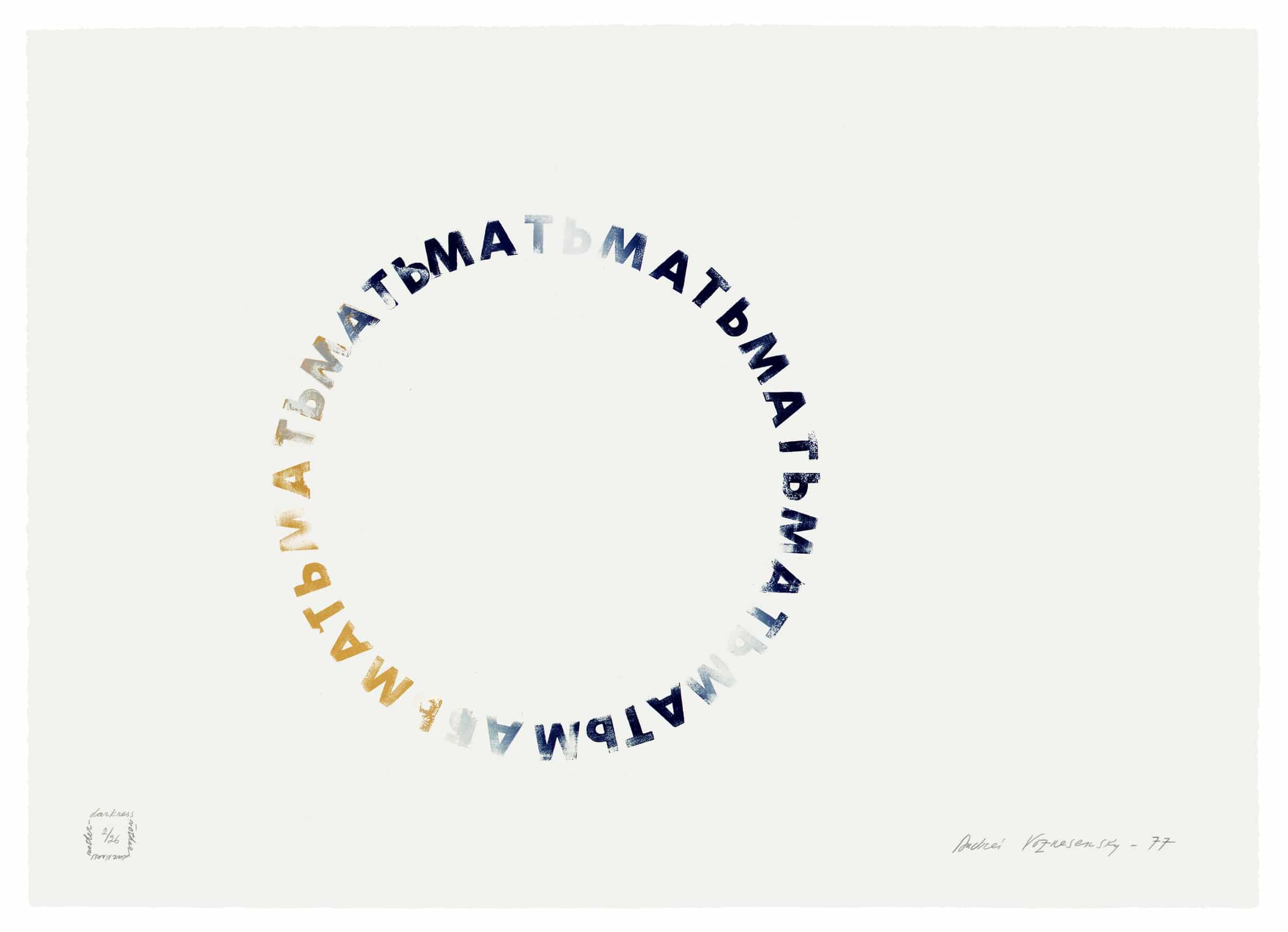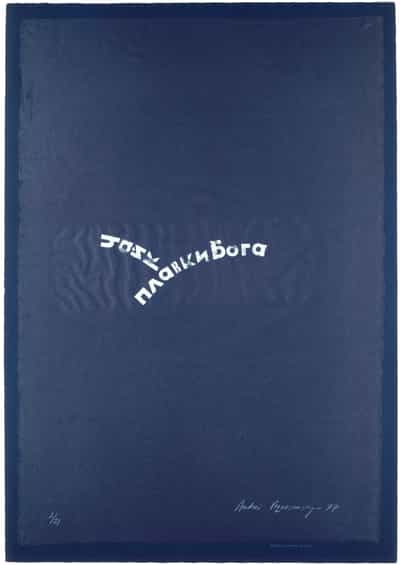About the Artist
Born in Moscow, Andrei Voznesensky (1933-2010) was a world-renowned Russian poet. While Voznesensky was trained in architectural draftsmanship and toyed with being a painter, he published his first poem in 1958. His description of modern man using contemporary metaphor and examples with a new and daring rhythm, has generated great critical and public response, over 500,000 people ordered his 1962 book An Achilles Heart in advance. While Voznesensky tried to remain neutral and would not discuss politics, his work was called obscure and gained incredible controversy. After being receiving the USSR state prize for poetry in 1977 he was immediately forbidden to publish, read in public, and his name was taken off the official list of Soviet writers. However, Voznesensky was able to travel and visited the United States in the seventies, where he first met Tatyana Grosman. Mrs. Grosman was interested Voznesensky as an admirer of his poetry, but in particular because she had seen a word-poem by the poet in honor of the first moon landing, and wanted to collaborate. Tatiana and Alexander Liberman, the Russian artist, introduce the Grosmans to Voznesensky. Instantaneously collaboration between Liberman and Voznesensky was organized, and a second collaboration between Voznesensky and Robert Rauschenberg was planned. The result was the 1979 unbound book, Nostalgia for the Present. Mrs. Grosman invited Voznesensky to come out to West Islip in 1978 to create his own lithographs. During this visit he produced Seagull – Bikini of God and Darkness Mother. While Voznesensky and Rauschenberg met at this moment, their collaboration was not as Mrs. Grosman had expected. Rauschenberg helped Voznesensky select the colors for Darkness Mother, and Voznesensky offered Rauschenberg lines from unpublished poems to complete six prints he had been working on.

